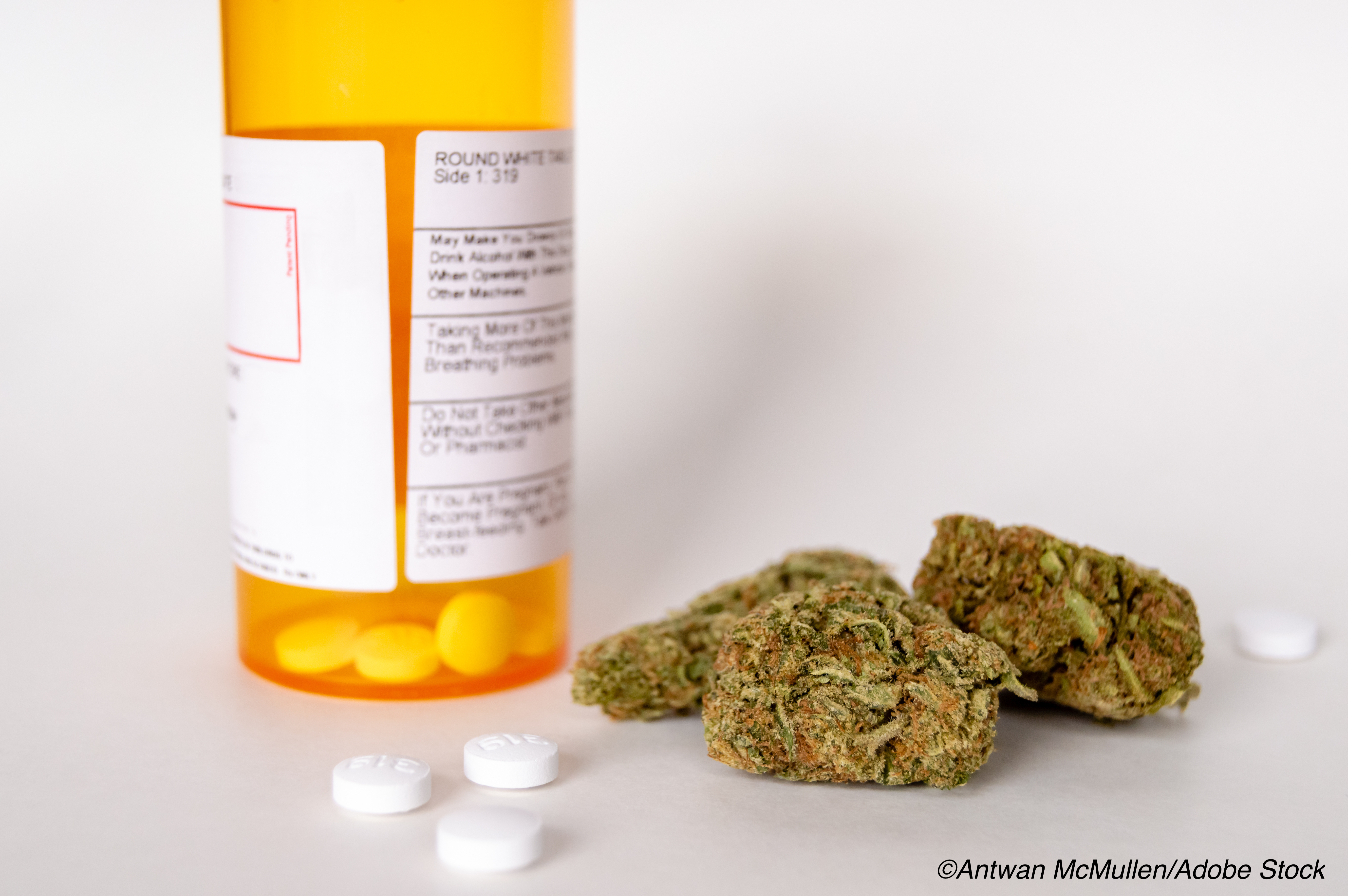An increased count of medical and recreational cannabis storefront dispensaries was associated with lower opioid-related death rates, an observational study found.
“While the associations documented cannot be assumed to be causal, they suggest a potential association between increased prevalence of medical and recreational cannabis dispensaries and reduced opioid-related mortality rates,” wrote Greta Hsu, PhD, of University of California Davis Graduate School of Management, and Balazs Kovacs, PhD, of Yale University School of Management, in The BMJ.
“This study highlights the importance of considering the complex supply side of related drug markets and how this shapes opioid use and misuse,” they said.
The findings “join an overall mixed evidence base, which makes firm conclusions difficult,” noted Sameer Imtiaz, PhD, of the Center for Addiction and Mental Health in Toronto, and co-authors, in an accompanying editorial. “Although some authors might interpret their findings as evidence supporting cannabis liberalization to address the opioid crisis, such conclusions are currently premature without evidence of causality.”
An earlier study found that between 1999 and 2010, there were slower increases in opioid-related deaths in states with medical cannabis laws, though an extension of the analysis through 2017 concluded that “not only did findings from the original analysis not hold over the longer period, but the association between state medical cannabis laws and opioid overdose mortality reversed direction from −21% to +23% and remained positive after accounting for recreational cannabis laws.”
Other mixed evidence has suggested that cannabis use is associated with increases in non-medicinal use of prescription opioids and opioid use disorder in population studies, but for those at high risk of opioid overdose, regular cannabis use is also associated with increases in cessation of injection opioid use, retention in opioid agonist treatment programs, and decreases in illicit opioid use
Hsu and Kovacs analyzed data from 812 counties in 23 U.S. states that offered legal protection to medicinal or recreational cannabis dispensaries by the end of 2017. They combined CDC mortality data, census data, and information about storefront dispensaries from Weedmaps.
An increase from one to two cannabis dispensaries in a county led to an estimated 17% reduction in all-opioid mortality rates (β=−0.17, 95% CI −0.23 to −0.11, P<0.05). An increase from two to three stores was associated with a further 8.5% reduction in all-opioid mortality.
The association was stronger for deaths from synthetic opioids only (excluding methadone) such as fentanyl: then, an increase from one to two stores led to an estimated 21% mortality drop (β=−0.21, 95% CI −0.27 to −0.14, P<0.05).
Negative mortality associations also were seen for medical and recreational dispensaries when they were considered separately. An increase in medical dispensary count from one to two was associated with an estimated 15% reduction in all-opioid mortality rates while a similar increase in recreational dispensary count was associated with an estimated 11% reduction.
“Our findings suggest that increasing availability of legal cannabis (modeled through the presence of medical and recreational dispensary operations) is associated with a decrease in deaths associated with the T40.4 class of opioids, which include the highly potent synthetic opioid fentanyl,” Hsu and Kovacs wrote.
“This finding is especially important because fentanyl-related deaths have become the most common opioid related cause of death, with 46,802 reported in 2018, representing 67% of all opioid-related deaths,” they added.
“However, the potential harms of cannabis, including the cognitive development of adolescents, medical conditions such as schizophrenia, and public safety risks, should not be ignored,” Hsu and Kovacs pointed out. “Overall, a greater understanding is needed about the impact of cannabis legalization on opioid misuse and public health outcomes before policy makers can weigh the potential benefits against the harms of promoting cannabis legalization.”
Hsu and Kovacs studied data spanning from 2014 to 2018 (the most recent year that county-level mortality data were available). Delivery cannabis services or other distribution mechanisms with no physical storefront were excluded. Their analysis included measures of population, unemployment, disability, per capita income, and education, and yearly gross domestic product for each county used as controls for county comparisons.
“Overall, our study should be regarded as a conservative examination of how the legal availability of cannabis in the U.S. through storefront dispensaries with specific, known locations, rather than the total availability through legal and illicit markets, relates to opioid related mortality rates,” they cautioned. “Further investigation into the validity of Weedmaps and the scope of its coverage for legal and illicit markets is needed.”
“Cannabis liberalization cannot be regarded as a remedy to the opioid crisis until a robust evidence base is available,” the editorialists said.
In the U.S., cannabis liberalization “offers unique opportunities to prospectively randomize counties within states to legalization of either medicinal or recreational cannabis,” they suggested. “Comparing individual-level data of participants with use of prescription opioids and illicit opioids within these designs would inform a more nuanced understanding of the substitution between opioids and cannabis.”
-
An increased count of medical and recreational cannabis storefront dispensaries was associated with reduced opioid-related death rates, an observational study found.
-
The findings join “an overall mixed evidence base, which makes firm conclusions difficult,” the editorialists wrote.
Paul Smyth, MD, Contributing Writer, BreakingMED™
Hsu and Kovacs reported no disclosures.
Imtiaz reported no disclosures.
Cat ID: 144
Topic ID: 87,144,254,730,192,144,151,925



